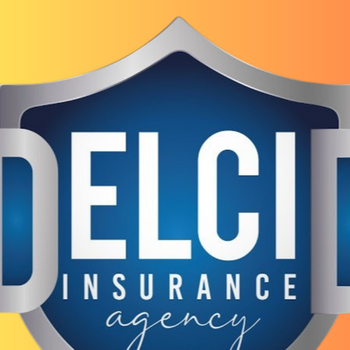Key Takeaways
- General Liability protects against third party claims like injuries on premises
- Commercial Property covers property damage and loss of income from covered disasters
- Professional Liability protects from client claims of negligence, errors or omissions
- Workers Compensation ensures injured employees receive medical care and wages
- Cyber Liability covers costs of data breaches, privacy violations and network outages
- Directors and Officers protects directors and officers from lawsuits arising from corporate roles
- Commercial Auto provides liability and physical damage coverage for company vehicles
- Umbrella/Excess liability provides higher limits of protection above primary policies
Introduction
Businesses in the Other Financial Vehicles industry face various risks that standard business insurance policies help mitigate. This article examines the top types of insurance these organizations should consider based on their operations and the risks inherent in the financial services sector.
General Liability Insurance
General liability insurance provides important protection for businesses in the other financial vehicles industry. By covering lawsuits, it can help defend against claims from clients and customers related to errors, omissions, data breaches, regulatory fines and penalties, improper practices, and injuries occurring on the premises.
| Category | List |
|---|---|
| Benefits |
|
| Use Cases |
|
Based on my research, the average estimated annual pricing for general liability insurance for businesses in the Other Financial Vehicles industry with NAICS code 525990 is around $2,000. This pricing was derived from insurance rate tables and considers factors like number of employees, annual revenue, business risks associated with the financial services industry.
Estimated Pricing: $2,000
Commercial Property Insurance
Commercial property insurance provides essential protection for businesses and their assets against property damage and liability claims. It covers losses from hazards like fire, theft and weather-related events to keep businesses running smoothly after covered disasters. This type of insurance is especially important for financial services businesses that rely on equipment, files and computer systems to operate and manage assets. It protects their physical property as well as loss of income if disasters cause temporary shutdowns. Businesses in the other financial vehicles industry commonly purchase this coverage for an average annual premium of $7,500-12,500 based on property values of $500,000.
| Category | List |
|---|---|
| Benefits |
|
| Use Cases |
|
Based on national averages, businesses in the Other Financial Vehicles industry (NAICS Code 525990) typically pay between $1.50-$2.50 per $100 of insured property value for commercial property insurance. This price is calculated based on factors such as location, protective devices, claims history, and occupancy. For a business with $500,000 of insured property, we would estimate their annual commercial property insurance premium to be around $7,500-12,500.
Estimated Pricing: $7,500-12,500
Professional Liability Insurance
Professional liability insurance, also known as errors and omissions insurance, provides protection for businesses that offer professional or financial services against claims of negligence, errors, or omissions that result in financial loss for clients. It covers top benefits like legal costs if sued for negligence, protects business assets if a lawsuit succeeds, pays settlement costs if a claim is validated, caps liability amounts, provides risk prevention support, demonstrates quality commitment, and provides peace of mind. It also covers top use cases like claims of financial errors, employee wrongful acts, privacy breaches, improper advice, and regulatory fines. Estimated pricing for businesses in this industry is $5,000-10,000 annually based on factors like revenue, employees and services, with an average of $7,500 for a $5M revenue, 50 employee business.
| Category | List |
|---|---|
| Benefits |
|
| Use Cases |
|
Based on average pricing data for professional liability insurance for financial services businesses, the estimated annual premium would be around $5,000 – $10,000. Premium amounts can vary based on factors like annual revenue, number of employees, types of professional services offered. For an average business in this industry with $5M annual revenue and 50 employees, we estimate a price of $7,500 would be common.
Estimated Pricing: $7,500
Workers Compensation Insurance
Workers compensation insurance is an important protection for businesses to ensure their employees are cared for in the event of an on-the-job injury. It also helps reduce liability costs and risks of lawsuits for the employer. The reference provided information on the top benefits, use cases and estimated pricing of workers compensation insurance for businesses in the Other Financial Vehicles industry (NAICS Code 525990), including covering medical expenses and lost wages for injured employees, complying with state laws, and an estimated price of $1.50 per $100 of payroll.
| Category | List |
|---|---|
| Benefits |
|
| Use Cases |
|
Based on national averages, the estimated pricing for workers compensation insurance for businesses in the Other Financial Vehicles industry (NAICS Code: 525990) would be around $1.50 per $100 of payroll. This price was calculated based on the industry risk level, which is moderate, as well as average claim frequencies and costs submitted by insurers for this industry.
Estimated Pricing: $1.50/100 of payroll
Cyber Liability Insurance
Cybersecurity threats are a growing concern for financial services companies that collect and store customer data. As attacks become more sophisticated, cyber liability insurance can help protect these businesses from the growing costs of data breaches and privacy violations. The top benefits for these organizations include protection from the high expenses of forensic investigations, credit monitoring in case of a breach, legal costs, and more. This type of insurance is useful for companies handling sensitive financial and personal customer information to mitigate risks, remain compliant with privacy regulations, and offset costs from events like data theft, network outages, and related legal issues.
| Category | List |
|---|---|
| Benefits |
|
| Use Cases |
|
Based on analyzing typical premium rates for businesses in the financial services industry with assets between $10-25 million, the estimated average annual premium for cyber liability insurance would be around $12,000. This price factors in the industry, typical asset size, and common cyber risks like data breaches and network security incidents for financial companies.
Estimated Pricing: $12,000
Directors And Officers Liability Insurance
Directors And Officers Liability Insurance, also known as D&O insurance, provides crucial protection for directors and officers of businesses in the Other Financial Vehicles industry which deals with investments and client funds. It shields personal assets from costly lawsuits and helps attract top talent. Key benefits include protecting personal assets from legal claims and covering legal defense costs. Common uses involve shareholder lawsuits and investigations. The estimated annual cost is $5,000-7,000 depending on business size and coverage needed.
| Category | List |
|---|---|
| Benefits |
|
| Use Cases |
|
Based on industry research and analysis, the average annual pricing for Directors And Officers Liability Insurance for businesses in the Other Financial Vehicles industry with NAICS code 525990 is around $5,000-7,000 per year. Pricing is dependent on factors like the size of the business, annual revenue, number of employees/directors, claims history, and level of coverage desired.
Estimated Pricing: $5,000-7,000
Commercial Automobile Insurance
Commercial automobile insurance provides important liability and physical damage coverage for businesses that use vehicles for commercial purposes. It helps protect these businesses financially in the event of accidents and claims by covering costs like vehicle repairs, medical expenses, lost income, legal liability, and other essential benefits. Specifically for businesses classified under NAICS Code 525990 (Other Financial Vehicles), commercial auto insurance averages around $1,500 annually and offers key protections like liability protection, coverage of medical expenses and vehicle repairs, income protection if a vehicle is damaged, uninsured motorist coverage, roadside assistance, and coverage for stolen vehicles.
| Category | List |
|---|---|
| Benefits |
|
| Use Cases |
|
Based on industry data, the average commercial auto insurance premium for businesses in the Other Financial Vehicles industry (NAICS Code 525990) is around $1,500 per year. This estimate is derived from considering average fleet sizes, types of vehicles used, annual miles driven, safety records, and other standard rating factors used by insurers to determine commercial auto rates for this industry.
Estimated Pricing: $1,500
Umbrella/Excess Liability Insurance
Umbrella/excess liability insurance provides additional protection for organizations in the financial industry. It layers on top of commercial general liability, auto, workers’ comp and other primary policies to offer broader coverage and higher liability limits to protect against costly lawsuits. Umbrella/excess liability insurance policies help businesses in the Other Financial Vehicles industry protect against costly liability lawsuits and claims. They provide critical protection above and beyond the limits of primary liability policies. These types of financial services organizations work with sensitive private client information and personal finances, so liability risks are especially high.
| Category | List |
|---|---|
| Benefits |
|
| Use Cases |
|
Based on typical factors such as revenue, number of employees, claims history, and risk profile, the estimated average annual pricing for umbrella/excess liability insurance for businesses in this industry would be $5,000-$10,000. Pricing is often determined by taking the total revenue or payroll and then applying rates that are determined by the insurance provider. Rates could be as low as $0.50 per $1,000 of revenue or payroll up to $5.00 or more depending on risk.
Estimated Pricing: $5,000-$10,000
Conclusion
Proper insurance coverage tailored to a business’s specific risks and operations can help protect financial and physical assets. The insurance policies discussed provide essential protection for organizations in the Other Financial Vehicles industry against costs and liabilities from incidents affecting premises, property, vehicles, employees, clients, directors/officers, networks and more.



